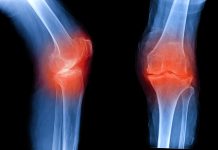Stuart J. Corr1,2,3, Steven Curley1,4, Zhihui Wang5,6, and Vittorio Cristini5,6
1Department of Surgery, Division of Surgical Research, Baylor College of Medicine, Houston, TX 77030, USA
2Department of Chemistry, Rice University, Houston, TX 77005, USA
3Department of Bioengineering, University of Houston, Houston, TX 77004, USA
4Department of Mechanical Engineering and Materials Science, Rice University, Houston, TX 77005, USA
5Department of NanoMedicine and Biomedical Engineering, University of Texas Health Science Center at Houston (UTHealth) McGovern Medical School, Houston, TX 77054, USA
6Brown Foundation Institute of Molecular Medicine, University of Texas Health Science Center at Houston (UTHealth) McGovern Medical School, Houston, TX 77030, USA
Hepatocellular carcinoma (HCC) and pancreatic ductal adenocarcinoma (PDAC) are perhaps two of the most frightening and terrifying diseases to be diagnosed with. HCC is the third leading cause of cancer deaths worldwide, with a 5-year survival rate of 17.2 %. PDAC has a median survival rate of < 6 months and an utterly dismal 5-year survival rate of 7.2 %. Given that these trends have essentially remained stagnant during the 20th century, it is hoped that new technologies and medical treatments in the 21st century may usher in hope for patients diagnosed with these diseases.
As part of a new government initiative, the National Institute of Health (NIH) back in 2009 established a new program that would allow cancer to be looked at from a fresh set of eyes. Named the Physical Sciences in Oncology (PS-OC) network under the organization of the National Cancer Institute (NCI), this program brought together leading physical scientists, engineers, tumor biologists, and oncologists to combat and tackle oncology, offering new insights and approaches to studying, treating, and ultimately curing this disease. One such center to be granted a PS-OC award was the Center for Transport Oncophysics (CTO), established at Houston Methodist Research Institute and the University of Texas M.D. Anderson Cancer Center. Operating between 2009 and 2015, the center’s aim was to evaluate the process of mass transport in cancer to generate novel methods to improve diagnosis and treatment of cancer. During this time, we began collaborating and producing seminal work in the field of non-invasive radiofrequency cancer hyperthermia and mechanistic patient-specific predictive correlation of tumor drug response with microenvironment and perfusion measurements.
Our cancer therapy and research models were essentially built upon the premise that radiofrequency electric fields, in the MHz region, have unique biological effects on cancer. In our daily lives, we are bombarded all the time by time-varying electric fields, originating from cell phones, communications towers, Bluetooth, and WiFi networks. These fields are generally low power and are non-harmful to biological systems. However, by choosing specific frequencies with specific powers, we can exploit the electrical nature of tissues, organs, and cancer, to invoke an anti-cancer effect.
In our labs, we have shown that deeply penetrating high power electric fields at a frequency of 13.56 MHz can elicit anti-cancer effects through both hyperthermia and enhanced perfusion of chemotherapeutics into the tumor. The electrical properties of cancer (i.e. conductivity and permittivity) are inherently different from healthy tissue and offer a unique and exciting way of targeting cancer whilst leaving healthy tissues intact: this is perhaps the ‘holy grail’ of oncology.
We are currently on the cusp of establishing the Center for Translational Oncology (CTEO) – a center whose objective, among others, is to create a personalized treatment plan for patients undergoing non-invasive radiofrequency cancer therapy for both HCC and PDAC. One aspect of the CTEO involves the use of advanced magnetic resonance imaging (MRI)-based platforms to diagnose and treat HCC and PDAC. Such platforms include MR-Thermography, Magnetic Resonance Electrical Properties Tomography (MREPT), MR Elastography (MRE), and intravoxel incoherent motion (IVIM). The use of advanced modeling algorithms will allow for personalized treatment plans to be developed for patients undergoing non-invasive radiofrequency hyperthermia, based on the specific electrical, thermal, and mechanical properties of the patients. Another aspect includes the use of nanomaterials, stem cell isolation techniques, and intracellular thermometers to understand the intracellular heterogeneities that dictate the sensitivity of cancer cells and their sub-populations (i.e. cancer stem cells) to hyperthermia-based electromagnetic therapies. Understand intracellular heterogeneities will also help to determine whether it is possible to measure temperature variations on a sub-cellular level, across different cellular organelles. These are just a small selection of the exciting and adventurous possibilities the CTEO has to offer.
It should also be worth mentioning that some aspects of this technology, specifically the non-invasive radiofrequency hyperthermia system are currently undergoing the US FDA-approval process, with human trials set to commence in late 2016.
Vittorio Cristini, Ph.D.
UTHealth McGovern Medical School Department of Nanomedicine and Biomedical Engineering
Center for Advanced Biomedical Imaging (CABI) building, Room 3SCR6.4644
1881 East Road, Houston, TX 77054, USA
Website: https://med.uth.edu/nbme/faculty/vittorio-cristini/
ISI Highly-Cited Researchers in Mathematics: http://highlycited.com
Google scholar: http://scholar.google.com/citations?user=uwl5tw0AAAAJ&hl=en&oi=ao
Phone: +1 713-486-2315
Fax: +1 713-796-9697
E-mail: Vittorio.Cristini@uth.tmc.edu
Additional resources:
http://www.internationalinnovation.com/taking-cancer-out-of-the-equation/























